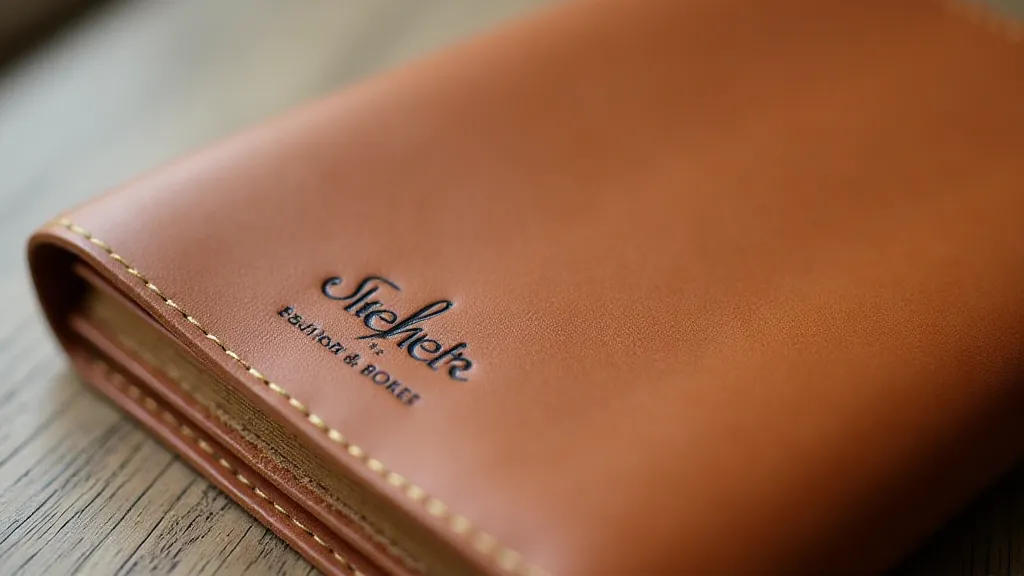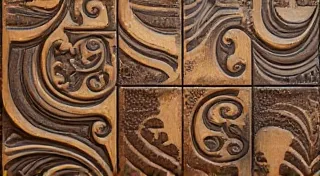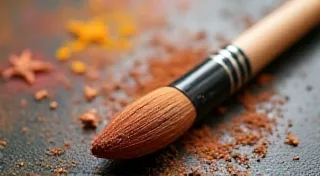The Embossed Impression: A Study in Decorative Leather Binding
There’s a particular scent that clings to antique accordions – a heady mix of aged leather, dust motes dancing in sunbeams, and the ghosts of countless melodies. I stumbled upon my first one in a dusty antique shop, its leather bellows cracked and faded, the gold tooling almost completely obscured by years of neglect. Holding it felt like grasping a fragment of history, a tangible connection to the musicians who had poured their hearts into its keys. That experience, that feeling of reverence for a handcrafted object, is what ultimately drew me to the world of leather bookbinding.
Decorative leather binding isn't merely about protecting the pages within; it's about creating an object of beauty, a work of art in itself. Historically, it represented wealth, status, and a deep appreciation for craftsmanship. Imagine the hours spent by skilled artisans, painstakingly tooling intricate designs onto leather covers, transforming a functional object into a cherished heirloom. It's a tradition that deserves understanding and, ideally, continuation.
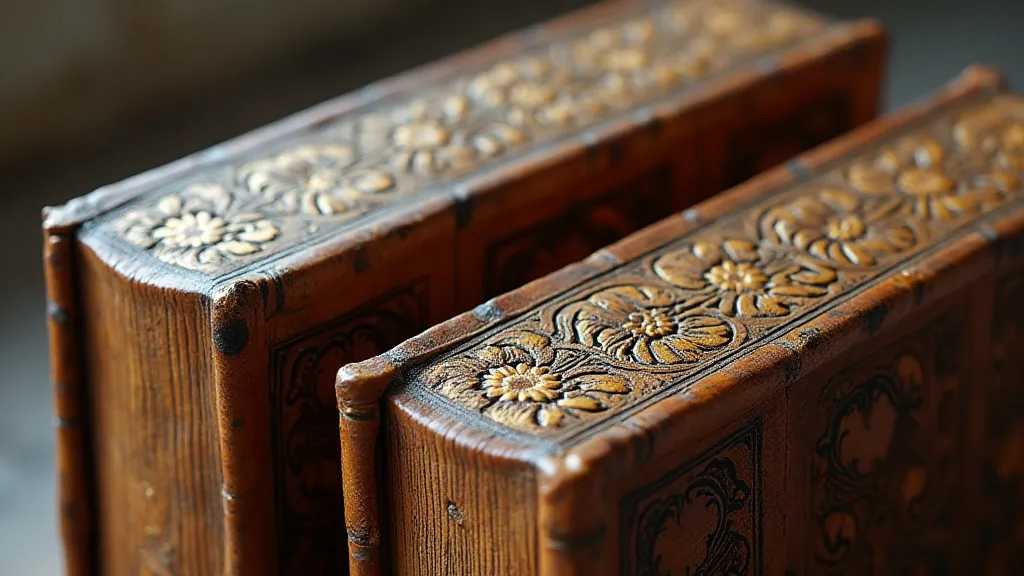
The Foundations: Leather Selection and Preparation
Before any decorative techniques can be applied, the leather itself must be carefully selected and prepared. Historically, calfskin was a favored choice for its durability and fine grain, but goatskin and sheepskin have also been used. Today, many binders opt for vegetable-tanned leather, as it offers a superior surface for tooling and accepts dyes and finishes beautifully. Chrome-tanned leather, while more supple and often cheaper, doesn't hold tooling details as well.
The process doesn't stop at simply choosing the right leather. It often requires wetting the leather – known as ‘casing’ – to make it pliable enough to accept the impressions of the tooling. The thickness of the leather will impact the depth and clarity of the embossed design; thinner leather yields more delicate impressions, while thicker leather allows for bolder, more three-dimensional designs.
Tooling: The Art of Impressing Designs
Tooling is arguably the most iconic and recognizable decorative technique in leather bookbinding. It involves using specialized tools – stamps, chisels, and punches – to press designs into the leather's surface. These tools range from simple floral motifs and geometric patterns to incredibly detailed portraits and landscapes. The skill lies not just in the tools themselves, but in the binder's understanding of pressure, angle, and leather grain.
There are different types of tooling. Portrayal involves carving a design with a V-shaped tool, essentially cutting away the leather to create a recessed image. This is a complex technique, requiring a steady hand and a keen eye. Floral tooling, on the other hand, utilizes floral stamps to create raised images, often accented with gold leaf. The complexity and detail achievable depend entirely on the binder's skill and the quality of the tools.
The tools themselves are an investment. A basic set can include background stamps (used to create a uniform texture), border stamps, and floral stamps. More advanced sets might include modelling tools for creating three-dimensional effects. It's worth researching different toolmakers; each has a distinct style.
Blind Embossing: Subtle Elegance
For those who prefer a more understated aesthetic, blind embossing offers a beautiful alternative. This technique involves using the same tools and principles as traditional tooling, but without the application of any pigments or gold leaf. The design is subtly impressed into the leather, creating a tactile and visually intriguing effect without relying on color. Blind embossing highlights the natural beauty of the leather and the precision of the tooling.
Blind embossing requires exceptional accuracy and control. The subtle nature of the design means that even slight imperfections in the tooling are readily apparent. It’s a technique that demonstrates a deep understanding of the material and a commitment to meticulous craftsmanship.
Foil Stamping: A Touch of Opulence
Foil stamping introduces a layer of shimmering elegance to leather binding. This process involves using heat and pressure to transfer a metallic foil – typically gold, silver, or copper – onto the leather's surface. It’s often used to accentuate tooling designs or create intricate patterns. The foil adheres to the raised areas of the leather, creating a visually striking contrast.
While foil stamping can be applied by hobbyists, professional binders often use specialized machinery to ensure consistent results. The quality of the foil itself is also crucial; cheaper foils tend to flake and fade over time. Choosing a high-quality foil and protecting the finished binding from excessive sunlight will help preserve the vibrancy of the metallic accents.
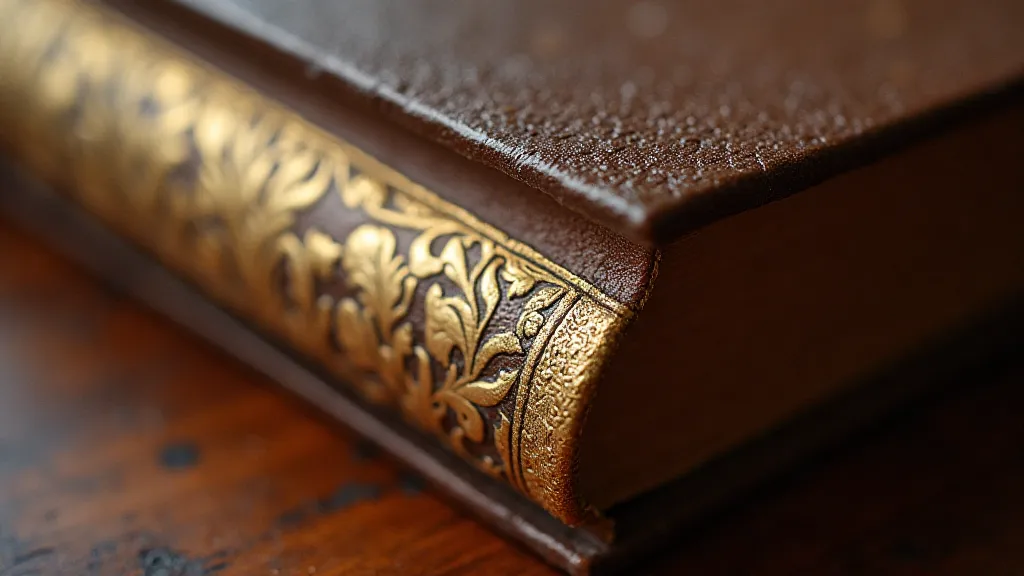
Historical Context and Restoration
Understanding the history of decorative leather binding is essential for both collectors and restorers. Different eras saw distinct trends in tooling styles and color palettes. Examining a historical binding can reveal invaluable clues about its origin and the techniques employed in its creation. For instance, 18th-century bindings often feature elaborate floral tooling with extensive use of gold leaf, while 19th-century bindings might showcase more restrained designs with a focus on geometric patterns.
Restoring antique leather bindings is a delicate and rewarding process. It requires a deep understanding of the original materials and techniques. While cleaning and minor repairs can be undertaken by hobbyists, more extensive restoration work should be entrusted to qualified professionals. Improper cleaning or the use of inappropriate materials can irreversibly damage a valuable historical binding.
Creating Custom Notebooks: A Modern Application
The principles of decorative leather binding aren't limited to creating elaborate antique volumes. These skills can be applied to more contemporary projects, such as creating custom notebooks and journals. Even a simple blind embossed design or a subtle foil stamped initial can elevate a plain notebook into a treasured object.
The availability of affordable leather scraps and beginner-friendly tooling sets makes it easier than ever for craft enthusiasts to experiment with decorative leather binding techniques. It’s a rewarding hobby that combines creativity, craftsmanship, and a connection to a rich historical tradition. The scent of leather, the satisfying click of the tooling stamp, the feeling of creating something beautiful and enduring – these are experiences that transcend the practical function of the object itself.
